 Image search results - "metro" Image search results - "metro" |
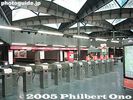
Metro stationAmendola Fiera station on the Red Line. Buying a ticket is easier at a kiosk than with the vending machine written in Italian.
|
|

Red line metroDuomo Station.
|
|

Yellow line metro
|
|

Inside the subway
|
|
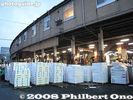
Officially called the Tokyo Metropolitan Central Wholesale Market, this sprawling complex handles mainly fish, but also fruits and vegetables. This is outside the market building.Update: Tsukiji Fish Market closed on Oct. 6, 2018 since it moved to Toyosu. These pictures were taken when toursts were still free to roam around the auction area and inner market. Now a blast from the past. Sorry you missed it.
|
|
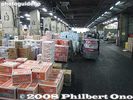
The market is near Tsukijishijō Station on the Toei Ōedo Line and Tsukiji Station on the Tokyo Metro Hibiya Line. The first subway arrives at around 5:20 am. First you walk through the fruit section..
|
|
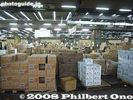
Fruit section.
|
|

Watch out for these speeding trolleys. They are almost everywhere.
|
|
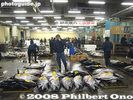
There is no map of the place so you may or may not find the tuna auctions. It's also easy to get lost in the market. This is the fresh fish tuna storage area.
|
|
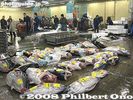
Never saw this much tuna in my life.
|
|
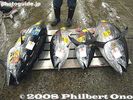
These fish can be huge, bigger and heavier than a sumo wrestler.
|
|
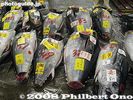
All the fish are labeled. They might indicate where the fish was caught (or raised).
|
|
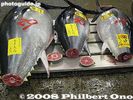
Tails are cut off to show the flesh color.
|
|
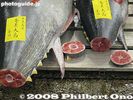
Buyers check the color of the flesh to determine how fatty the fish is.
|
|
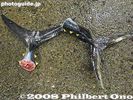
Cut-off tails
|
|
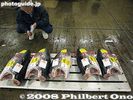
Headless tuna carcasses
|
|
|
|

Tuna head
|
|
|
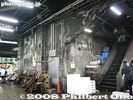
The market building has many signs of its old age.
|
|
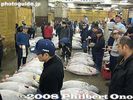
Frozen tuna auctions at Tsukiji Fish Market.
|
|
|
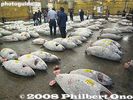
Frozen tuna anyone?
|
|
|
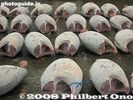
Headless frozen tuna.
|
|
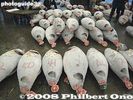
These frozen fish did not show any signs of melting. Wonder how long it takes for them to defrost.
|
|
|
|
|
|
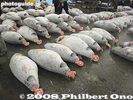
Each fish is worth thousands or tens of thousands of US dollars.
|
|

Looks good to me.
|
|
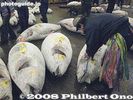
Tying a ribbon on fish.
|
|
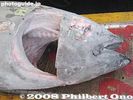
Frozen tuna head
|
|
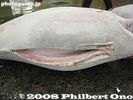
Tuna belly, the fatty part of the fish for toro sashimi.
|
|
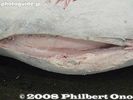
Looks yummy.
|
|
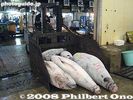
After the auctions are over, they haul out the fish using a variety methods.
|
|
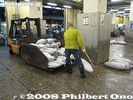
Hauling these tuna on this lift looked easy.
|
|
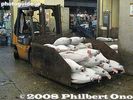
All full and ready to go. Gee, how much is all that tuna worth??
|
|
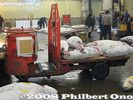
Smaller trolley for a smaller haul.
|
|
|

Hand-drawn cart.
|
|
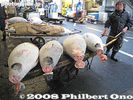
Hand-drawn cart, good for four fish.
|
|
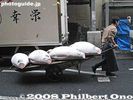
Good exercise in the morning.
|
|
|
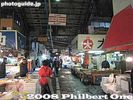
The fish is taken to the fish stalls in the market.
|
|
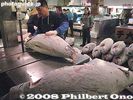
The frozen tuna is cut up into quarters lengthwise by a band saw.
|
|
|

Quite a few more to cut up.
|
|
|
|

After the fish is cut, they shave it with an ax.
|
|

Cutting up a fresh fish. They use a long, sharp knife, and not a band saw.
|
|

Tuna knives
|
|
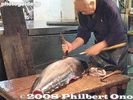
I wonder how long it takes to be able to cut up a giant tuna.
|
|
|
|

Where the head was attached.
|
|

The fresh tuna is cut up into smaller blocks.
|
|

This size is easy to sell to mom and pop sushi restaurants.
|
|
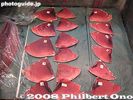
Fresh tuna
|
|
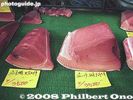
Caught in the Pacific Ocean.
|
|

The tuna flesh between the rib-like bones is also choice meat. It is scraped off with a spoon.
|
|

Packaged to sell.
|
|

The huge fish market consists of rows and rows of fish monger stalls, divided by narrow aisles.
|
|
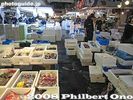
Styrofoam and plastic cartons contain all kinds of fish.
|
|
|
|

Fish waiting to be decapitated.
|
|
|
|

OK, which one's next?
|
|

Puffer fish swim happily, ignorant of their ultimate fate.
|
|
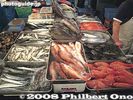
Fish and more fish...
|
|
|
|
|
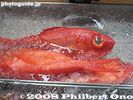
Fish in ice
|
|
|
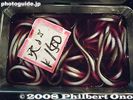
Eels
|
|

Sea urchin (uni), one of my favorites.
|
|

Oysters
|
|
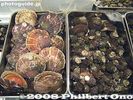
Shellfish
|
|

Sea urchins
|
|
|
|
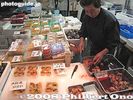
Shellfish
|
|
|

Squid in black ink
|
|

Octopi
|
|

Tako
|
|

Shrimp
|
|

Prawns
|
|

Prawns
|
|
|

Frozen crab
|
|
|
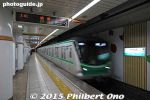
Chiyoda Line running at 3 am on New Year's morning.
|
|
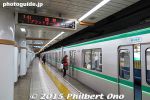
Chiyoda Line running at 3 am on New Year's morning.
|
|
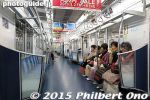
Chiyoda Line running at 3 am on New Year's morning with these ladies who gave New Year's prayers at a shrine.
|
|

Entrance to the Tokyo subway museum named Tokyo Metro Museum. It's under the elevated Tozai Line tracks. Near Kasai Station on the Tozai subway line.Official website: http://www.chikahaku.jp/en/
|
|
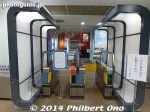
Enter the museum through this subway turnstile.See Japan's first subway cars from 1927, tunnel boring machines, subway history exhibits, and simulators.
|
|
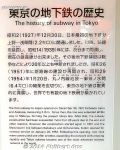
Japan's first subway opened in Tokyo in Dec. 1927 between Ueno and Asakusa.
|
|

Japan's first subway car used between Ueno and Asakusa. The forerunner of the Ginza Line.
|
|
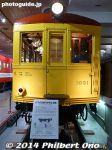
The exterior livery of the newest Ginza Line subway cars is based on this first subway car.
|
|
|
|
|
|

About the first subway car.
|
|
|
|
|
|
|
|
|
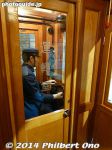
Driver's seat in the first subway car.
|
|
|

Japan's first subway station: Ueno Station
|
|
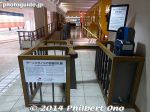
Automatic turnstile at Ueno Station in 1927
|
|
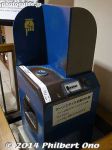
It was a fat fare, and passengers put in actual coins to go through the turnstile.
|
|

Automatic turnstile
|
|
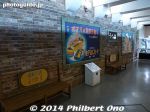
Recreated Ueno Station platform.
|
|
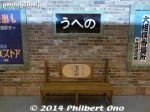
Recreated Ueno Station subway platform.
|
|
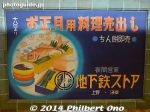
Advertising at recreated Ueno Station subway platform.
|
|

Sumo advertising at recreated Ueno Station subway platform.
|
|
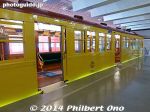
We can go inside the first subway car.
|
|
|
|
|
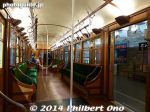
Inside Tokyo's first subway car. Refurbished.
|
|
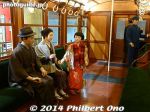
Mannequins inside Tokyo's first subway car.
|
|
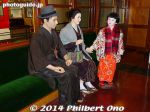
Judging from theor clothing, they look to be a well-to-do family.
|
|

College student
|
|
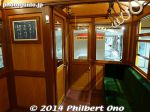
Subway driver's cab.
|
|
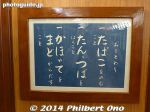
Subway rules for passengers: No smoking, no spitting, and don't stick out your face or hands outside the window.
|
|
|
|
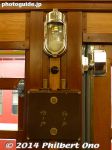
Emergency light
|
|

Door latch
|
|
|
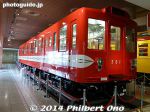
Marunouchi Line car from the mid-1950s.
|
|
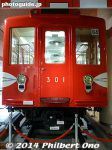
Marunouchi Line subway car
|
|
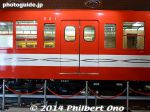
Marunouchi Line subway car
|
|
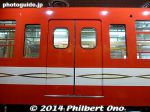
Marunouchi Line subway car
|
|
|
|
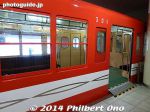
Go inside the Marunouchi Line subway car.
|
|
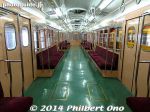
Inside the Marunouchi Line subway car.
|
|
|
|
|
|
|
|
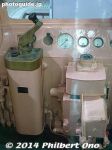
Marunouchi Line subway car driver's cab.
|
|
|
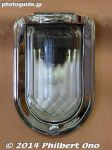
Emergency light
|
|
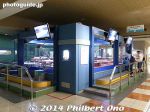
Subway train diorama
|
|
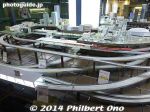
Subway train diorama
|
|
|
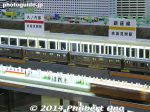
Subway train diorama showing Akasaka Mitsuke Station.
|
|
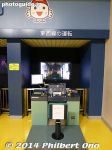
Subway train simulator. Takes practice to stop at the correct position at the station.
|
|
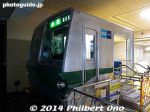
Chiyoda Line subway train simulator.
|
|
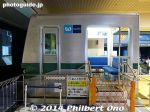
Chiyoda Line subway train simulator.
|
|
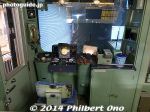
Chiyoda Line subway train simulator.
|
|
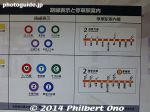
Old and new subway signs.
|
|
|
|
|
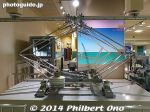
Pantograph
|
|
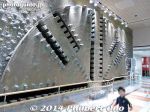
Shield boring machine
|
|
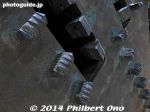
Shield boring machine teeth
|
|
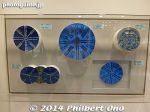
Different types of Shield boring machines.
|
|
|
|
|
|
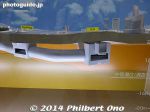
Scale model of a new subway line under construction in Tokyo.
|
|
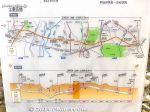
New subway line under construction in Tokyo.
|
|
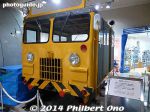
Maintenance car.
|
|
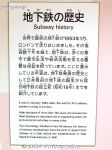
Subway history
|
|
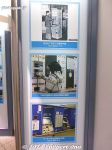
Evolution of subway ticket vending machines from 1956 to 2007. Current ticket vending machines use touchscreen panels.
|
|
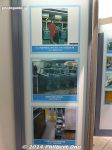
Automatic turnstiles taking subway tickets were introduced from 1974. From 2007, IC cards are used.
|
|
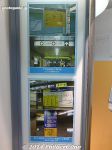
Old and new subway signs. Now the subway lines and stations are coded for people who cannot remember the Japanese names.
|
|
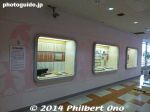
Japanese subway history
|
|
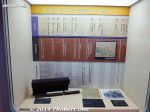
Planning hsitory of Tokyo's first subway.
|
|
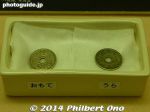
Subway tokens
|
|
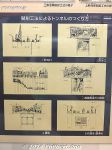
Methods to dig subway tunnels.
|
|
|
|
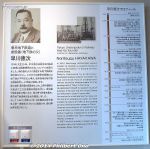
Noritsugu Hayakawa was the father of Japan's first subway.
|
|
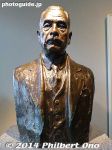
Statue of Noritsugu Hayakawa
|
|
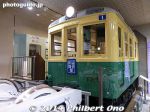
The first subway car used between Shimbashi and Shibuya in the late 1930s.
|
|
|
|
|
|
|
|
|
|
|
|
|
|
|
|
|
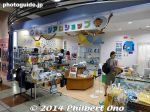
Museum gift shop
|
|
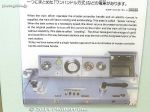
How to drive a subway train.
|
|
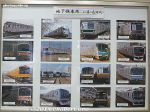
Subway cars today.
|
|
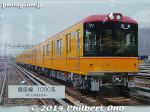
Current Ginza Line subway train.
|
|
|
|